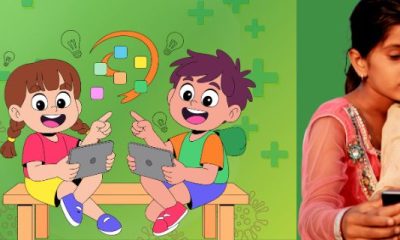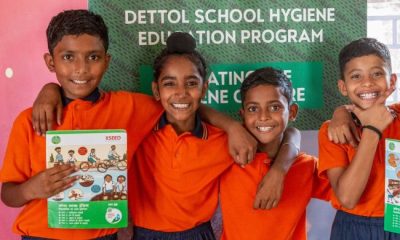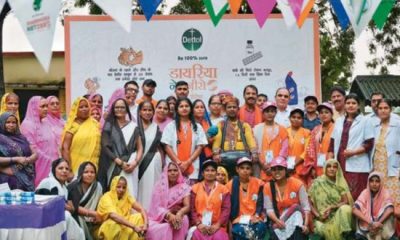Highlights
- The tomato flu was first identified on May 6 in Kerala’s Kollam district
- As of July 26, 2022, over 82 children have been infected with tomato flu
- The infection targets mostly children under five years of age
New Delhi: While the world is still grappling with the COVID-19 pandemic, a new virus called tomato flu or tomato fever is gaining a foothold in India. The tomato flu was first identified in the Kollam district of Kerala on May 6, 2022, and as of July 26, 2022, more than 82 children younger than 5 years with the infection have been reported by the local government hospitals, reported The Lancet Respiratory Medicine, a medical journal. The other affected areas of Kerala are Anchal, Aryankavu, and Neduvathur. Apart from Kerala, Tamil Nadu and Odisha have also reported cases of tomato flu.
The rare viral infection is in an endemic state and is considered non-life-threatening; however, because of the dreadful experience of the COVID-19 pandemic, vigilant management is desirable to prevent further outbreaks, The Lancet said in its report.
The infection gets its name ‘tomato flu’ from the red and painful blisters that appear throughout the body and over time enlarge to the size of a tomato. As per the report, these blisters resemble those seen with the monkeypox virus.
Tomato flu could be an after-effect of chikungunya or dengue fever in children rather than a viral infection. It could also be a new variant of the viral hand, foot, and mouth disease, reported The Lancet.
Who Is At The Risk Of Infection?
The infection targets primarily children under five years of age. However, in Odisha, children upto nine years of age have reported being infected with tomato flu. The infection is likely to spread through close contact. In the case of young children, the infection can spread through the use of nappies, touching unclean surfaces, as well as putting things directly into the mouth.
In its report, The Lancet added,
Given the similarities to hand, foot, and mouth disease, if the outbreak of tomato flu in children is not controlled and prevented, transmission might lead to serious consequences by spreading in adults as well.
Important to note, that immunocompromised adults are also at risk of catching the infection.
What Are The Symptoms Of Tomato Flu?
The common symptoms among children are high fever, rashes, and intense joint pain – similar to those of chikungunya. The other symptoms include fatigue, nausea, vomiting, diarrhoea, fever, dehydration, swelling of joints, body aches, and common influenza-like symptoms – similar to those seen when infected with dengue.
What Is The Treatment For Tomato Flu?
Tomato flu is a self-limiting disease that means it resolves on its own, with or without specific treatment. Currently, there is no specific drug as its cure. Since the symptoms resemble chikungunya, dengue, and hand, foot, and mouth disease, the treatment is also similar. It includes isolation, rest, intake of plenty of fluids, and a hot water sponge for the relief of irritation and rashes.
Supportive therapy of paracetamol for fever and bodyache and other symptomatic treatments are required, said The Lancet report.
Based on molecular and serological tests, the risk of viral infections like dengue, chikungunya, zika virus, varicella-zoster virus, and herpes is ruled out and an individual is confirmed to have contracted tomato virus.
Similar to other types of influenza, tomato flu is very contagious and hence, it is essential to take all sorts of precautions, especially hygiene and sanitisation.
NDTV – Dettol have been working towards a clean and healthy India since 2014 via the Banega Swachh India initiative, which is helmed by Campaign Ambassador Amitabh Bachchan. The campaign aims to highlight the inter-dependency of humans and the environment, and of humans on one another with the focus on One Health, One Planet, One Future – Leaving No One Behind. It stresses on the need to take care of, and consider, everyone’s health in India – especially vulnerable communities – the LGBTQ population, indigenous people, India’s different tribes, ethnic and linguistic minorities, people with disabilities, migrants, geographically remote populations, gender and sexual minorities. In wake of the current COVID-19 pandemic, the need for WASH (Water, Sanitation and Hygiene) is reaffirmed as handwashing is one of the ways to prevent Coronavirus infection and other diseases. The campaign will continue to raise awareness on the same along with focussing on the importance of nutrition and healthcare for women and children, fight malnutrition, mental wellbeing, self care, science and health, adolescent health & gender awareness. Along with the health of people, the campaign has realised the need to also take care of the health of the eco-system. Our environment is fragile due to human activity, which is not only over-exploiting available resources, but also generating immense pollution as a result of using and extracting those resources. The imbalance has also led to immense biodiversity loss that has caused one of the biggest threats to human survival – climate change. It has now been described as a “code red for humanity.” The campaign will continue to cover issues like air pollution, waste management, plastic ban, manual scavenging and sanitation workers and menstrual hygiene. Banega Swasth India will also be taking forward the dream of Swasth Bharat, the campaign feels that only a Swachh or clean India where toilets are used and open defecation free (ODF) status achieved as part of the Swachh Bharat Abhiyan launched by Prime Minister Narendra Modi in 2014, can eradicate diseases like diahorrea and the country can become a Swasth or healthy India.
[corona_data_new]



















